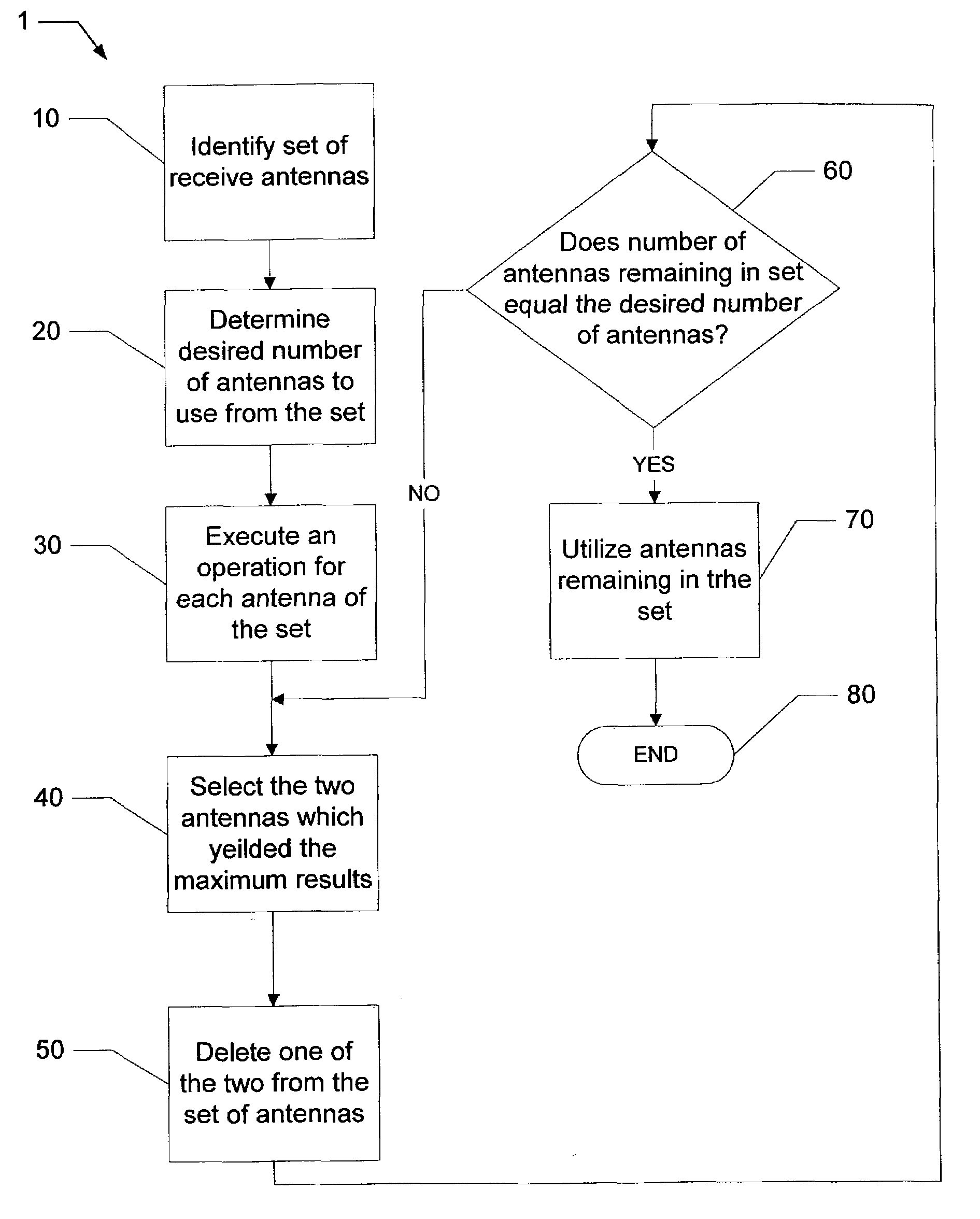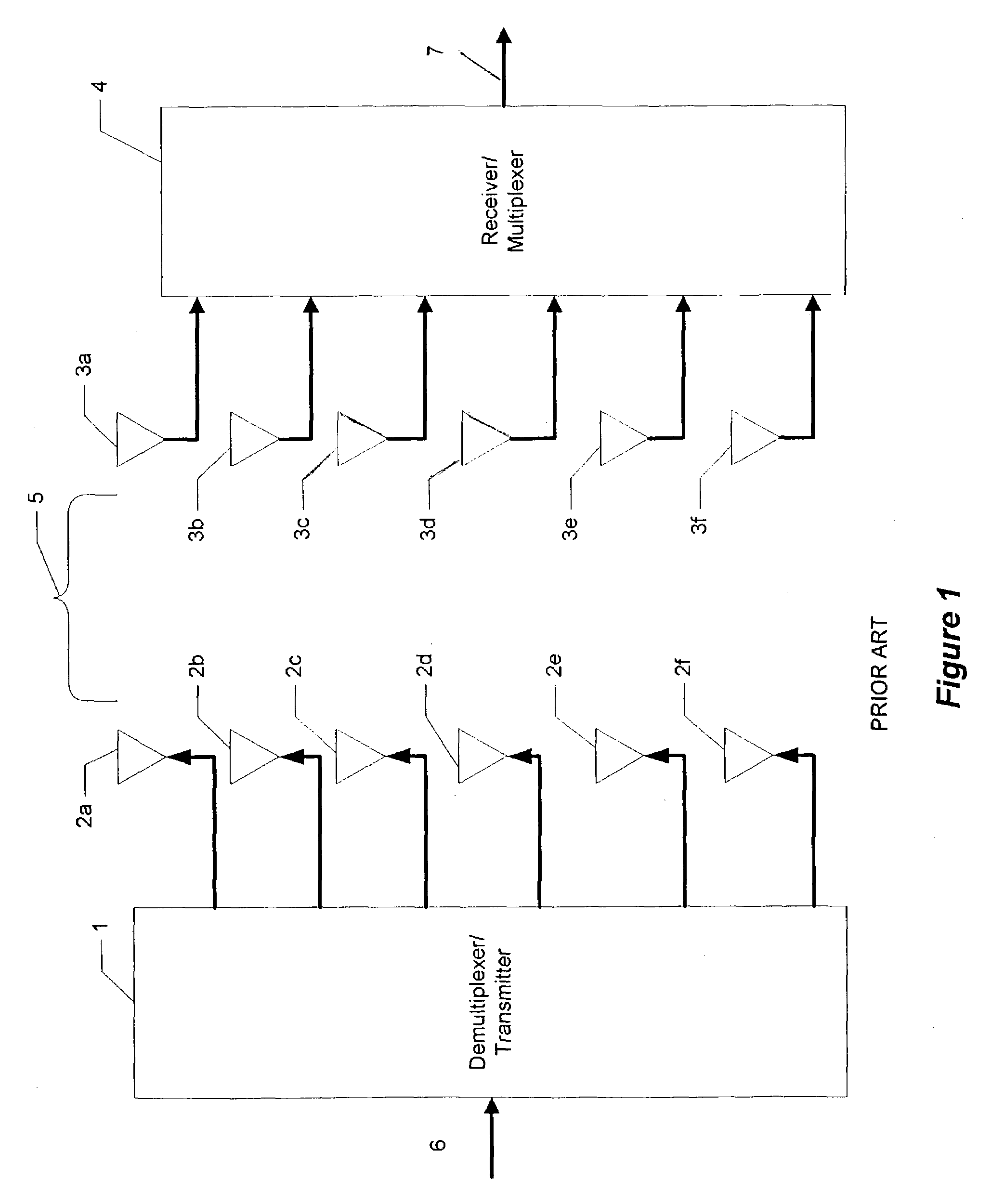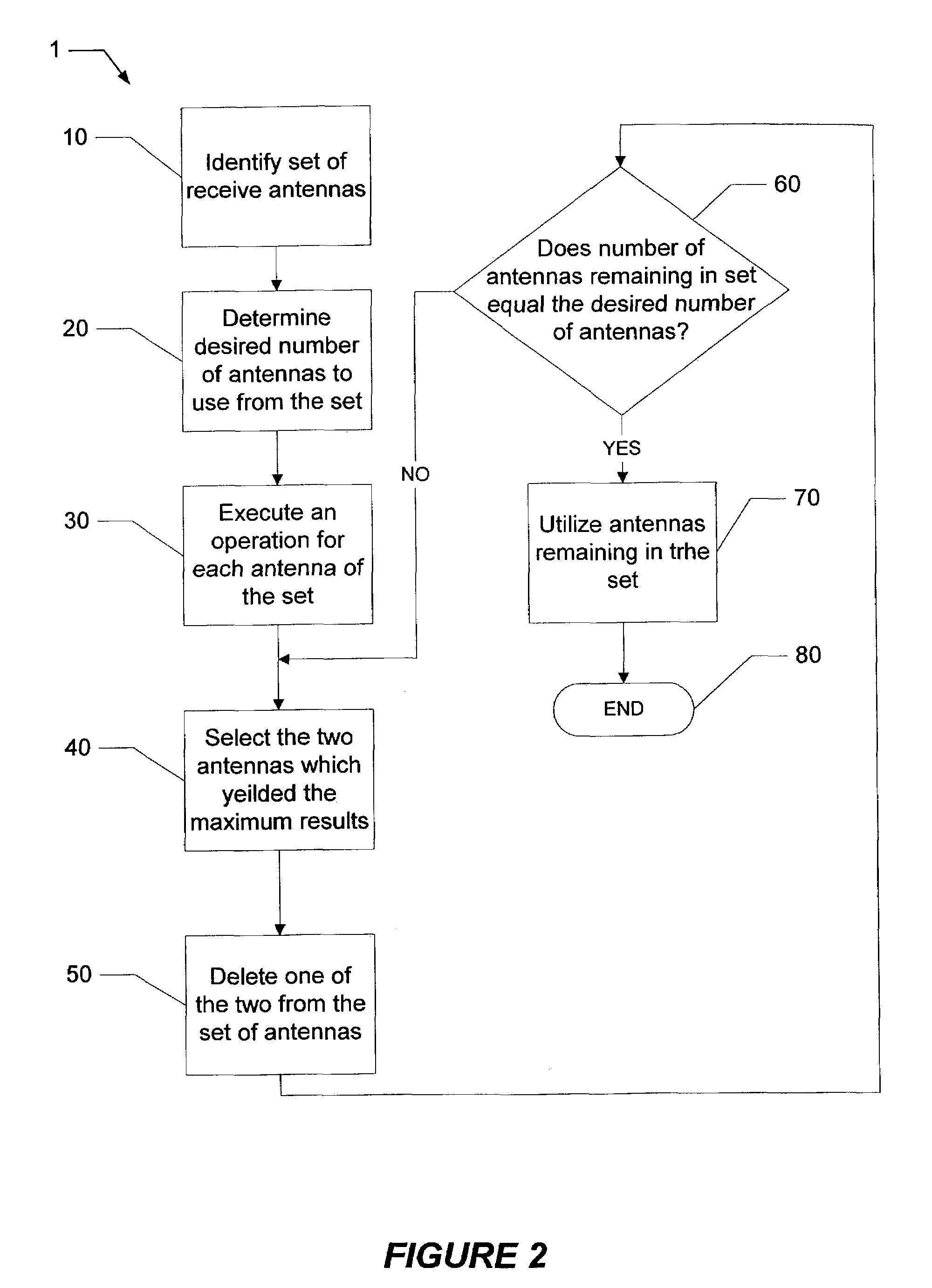Method of selecting receive antennas for MIMO systems
a technology of receiving antenna and receiving antenna, which is applied in diversity/multi-antenna systems, orthogonal multiplexes, multiplex communication, etc., can solve the problems of difficult implementation of high spectral efficiency and large amount of data being transmitted in a relatively small bandwidth
- Summary
- Abstract
- Description
- Claims
- Application Information
AI Technical Summary
Benefits of technology
Problems solved by technology
Method used
Image
Examples
Embodiment Construction
[0015]Referring to FIG. 1, a prior art MIMO / MIMO OFDM system is shown. In the MIMO / MIMO OFDM system, a stream of bits 6 is demultiplexed by demultiplexer / transmitter 1 into a predetermined number of substreams. Each substream is sent out over a different transmit antenna 2a–2f by demultiplexer transmitter 1. The signals transmitted by the transmit antennas 2a–2f get mixed while traveling through the wireless channel 5. The signals are received by receive antennas 3a–3f. The received signals are coupled from the receive antennas 3a–3f to receiver / multiplexer 4. Signal processing is applied to the signals at the set of receive antennas to unscramble the data. The unscrambled data streams are then demultiplexed into a high rate bit stream 7, which is a copy of the high rate bit stream 6.
[0016]As described above, MIMO and MIMO OFDM systems require relatively complex and expensive receivers. A method is presented by which performing receive antenna selection is provided, thereby reducing...
PUM
 Login to View More
Login to View More Abstract
Description
Claims
Application Information
 Login to View More
Login to View More - R&D Engineer
- R&D Manager
- IP Professional
- Industry Leading Data Capabilities
- Powerful AI technology
- Patent DNA Extraction
Browse by: Latest US Patents, China's latest patents, Technical Efficacy Thesaurus, Application Domain, Technology Topic, Popular Technical Reports.
© 2024 PatSnap. All rights reserved.Legal|Privacy policy|Modern Slavery Act Transparency Statement|Sitemap|About US| Contact US: help@patsnap.com










